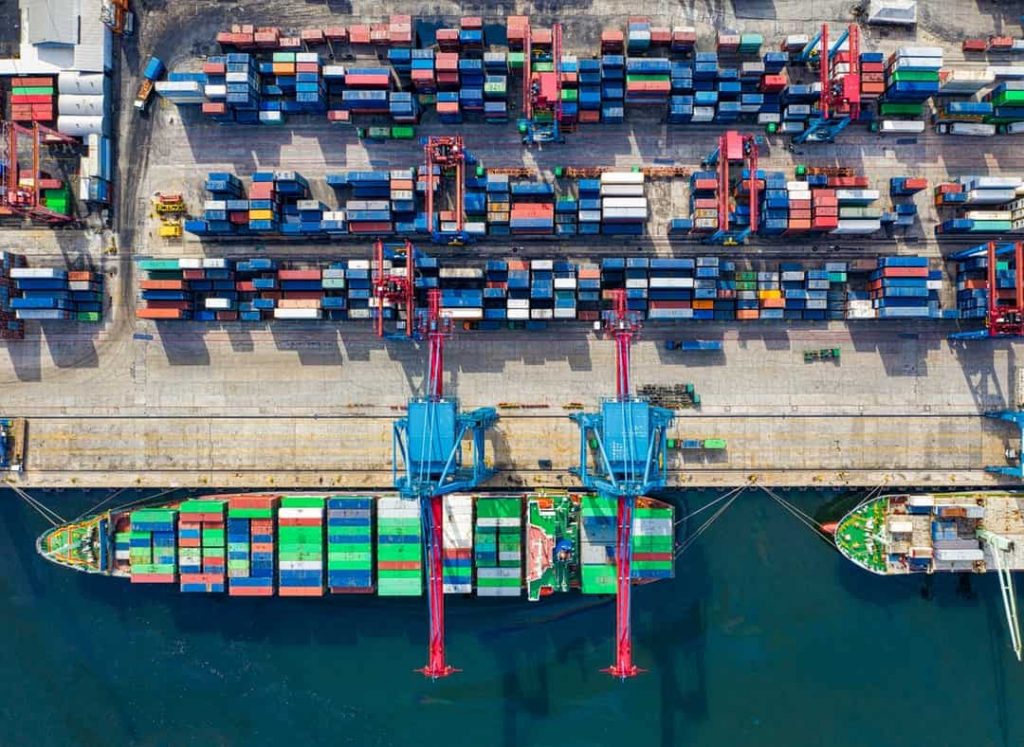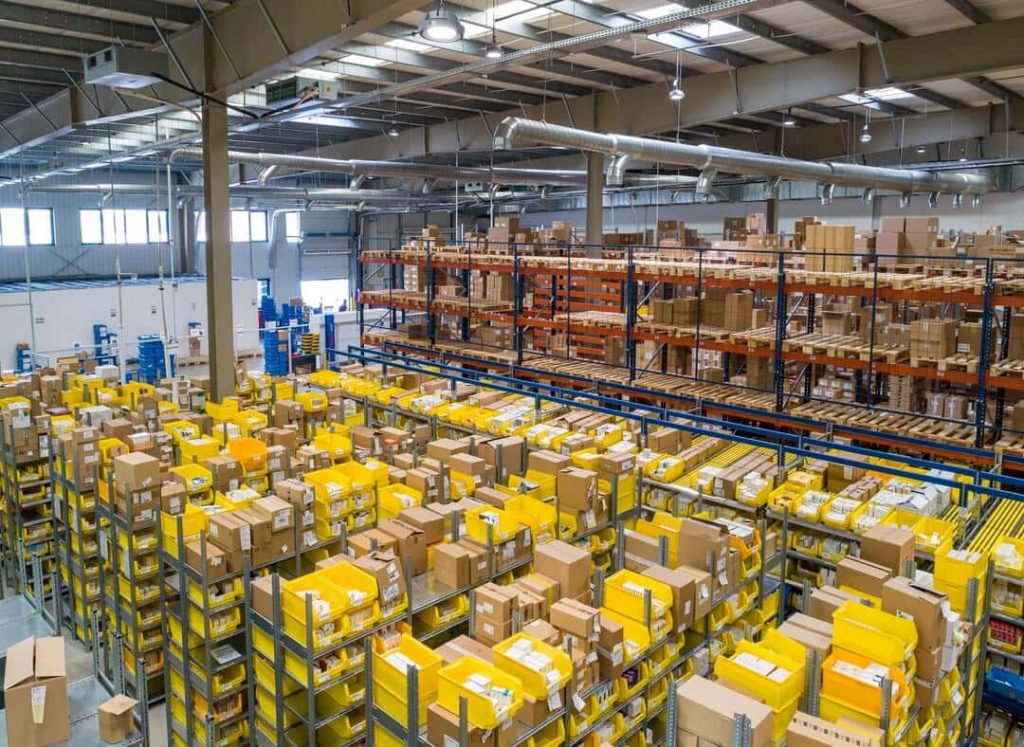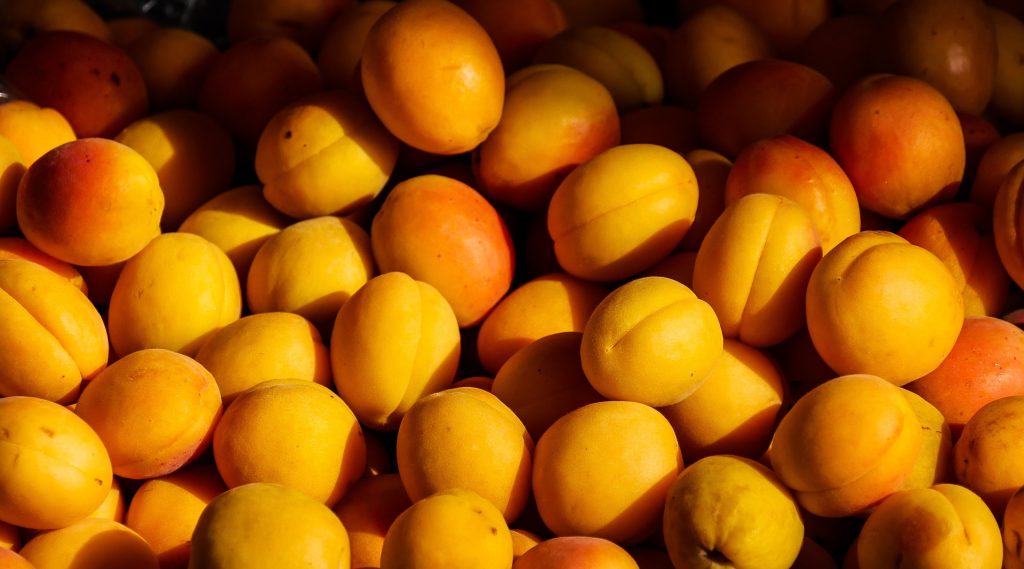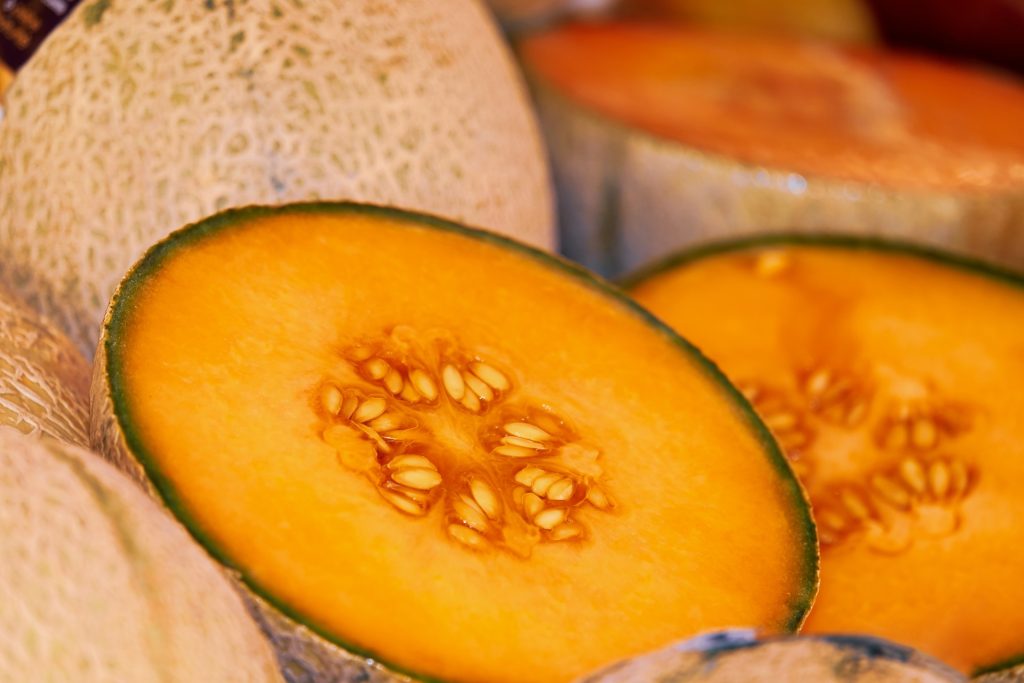Blog
Find articles that matter. From trading to shipping, trends to valuable goods, you can deep dive into everything you need.
Latest Posts
Blog
Tomatoes are one of the most important crops in the world. They are also one of the most popular fruits, consumed in different ways in different parts of the world. Tomatoes are used in a variety of foods and can be found in a wide range of dishes. They are used in salads and pizzas, and as sauces such as pasta sauce, salsa and ketchup. Tomatoes are also very beneficial to health. They are good sources of vitamin C, potassium, vitamin K, lycopene and folic acid. All these benefits and the wide range of uses make tomatoes very desirable for export to other countries. In this list, we have listed the main countries which export quality tomatoes around the world!
Turkey
Turkey is among the leading countries in the export of tomatoes. In 2021, Turkey continued its acceleration in tomato exports with a 20% increase to $314.4 million worth of tomatoes. Turkish tomato exports also ran at full speed in the first month of 2022, as tomato exports increased by 23% in the first month of the year. Interest in tomato products, which are further processed in the industry and turned into value-added products, is expected to continue to grow in 2022.
This year, Turkey set a goal of exporting $1 billion worth of tomatoes and products made from them by 2023. Turkey's success and this expectation are based on the fact that Turkey is the third-largest tomato-producing country in the world. Turkey is one of the world's leading tomato producers and exporters for that matter. This is thanks to the fact that tomatoes are part of more than half of the dishes in Turkish cuisine, and also due to its geographical location.
Mexico
Although Mexico is not even among the five countries that produce the most tomatoes, it is by far the leader in tomato exports. In 2020, Mexico exported $2.62 billion worth of tomatoes, making it the 1st largest exporter of tomatoes in the world. At $2.53 billion, the United States was the main destination for tomato exports from Mexico. The following year, 2021, Mexico was still in the lead with tomato exports of $2.17 billion. The country's success is increasing steadily. This is a direct result of becoming the United States' main supplier of different types of tomatoes, specifically Cherry and Roma tomatoes.
Netherlands
With exports worth about 1.69 billion euros in 2020 and 2021, The Netherlands has experienced a boom in the export of tomatoes in recent years. It has become the 2nd country with the most tomato exports in the last 3 years. This data is surprising for such a country. Because, with 900,000 tonnes of tomato production, the Netherlands is not even among the top 20 tomato producers in the world. The secret to this success is that a large part of the tomatoes produced in the Netherlands is not consumed in the country itself. Although export rates started to fall in 2021 as Morocco rapidly overtook the Netherlands, the country still makes quite a profit from tomato exports.

Morocco
Morocco is planning to reduce its tomato exports due to the drought, which has caused the price of one of the country's cheapest fresh staples to skyrocket in recent months. However, it is still one of the largest countries exporting tomatoes. In fact, Morocco ships about 430,000 tonnes of tomatoes to the European Union each year. This makes it the largest supplier of the European countries. Although with a tomato production of 1,347,000 tonnes, Morocco ranks 17th among the countries that produce the most tomatoes. Morocco is the fourth largest exporter of tomatoes with around $923 million worth of tomato exports. With $466,91B of exports, France is the biggest buyer of tomatoes from Morocco.
Spain
With a production of about 5,000,000 tonnes of tomatoes, Spain is the 7th largest producer of tomatoes in the world. Since the tomato holds a special place in Spanish culture, this is of course natural. From the famous Tomato Festival to the variety of tomato types produced, Spain definitely has an obsession with tomatoes. This is also reflected in its exports. Spain is the third-largest country with the most tomato exports, with an export volume of $1.1 billion. Although export rates began to decline last year, Spain still managed to export 512.48 million kilos of tomatoes in the first 10 months of 2021. With around $325 million worth of tomato exports, Germany is the largest buyer of tomatoes from Spain.
Canada
Canada is known for constantly exporting various commodities to other countries. As for tomatoes, they are one of the leaders in the field. That is strange because Canada does not even produce a lot of tomatoes. In fact, they are not even among the 25 countries with the highest tomato production. But thanks to about $450 million worth of tomato exports to the United States, their largest importer, Canada is now the fifth-largest country exporting tomatoes. In fact, the United States takes in nearly 85% of Canada's tomato exports. In 2020, Canada exported $458 million worth of tomatoes and $455.36 million of which went to the United States.
Import Top Quality Tomatoes With Turkish Goods
Whether you want to import cherry tomatoes, camparis or just simply tomatoes, it is highly advisable for you to search for the best quality. However, when looking for the best quality, there is a possibility that the prices are too high and that you have doubts. Moreover, the process of exporting goods from certain countries can be quite complex and confusing.
If you have these doubts, we are here to act for you! With its expert team, Turkish Goods will help you find the top quality tomatoes, and also take care of the import process. Thus, you can easily manage this stressful process and quickly receive your good quality and delicious tomatoes. Contact us now and get a quote within 48 hours!
You can start your journey with confidence if you have a product idea. A good idea might boost the market and even make you the greatest. The number of internet stores and sales has expanded in recent years. These demand hikes are mainly for things that aren't yet available or have just been released. Alternatively, things that never run out of demand will always be in short supply. The manufacturers or suppliers are the most important factor in this instance.
When you have a product idea, what you need to do is contact the manufacturers or suppliers. So which one should be preferred? Do manufacturers and suppliers do the same job? Should you prefer domestic companies or foreign companies? In our article, you will find answers to all your questions and take action with your product idea.
What are a Manufacturer and a Supplier?
Manufacturer and supplier are often considered synonymous. However, while the supplier can also be a manufacturer, some manufacturers do not want to be involved in the procurement phase. In short, the person who produces the product you want only produces it and can get help from the suppliers for the sales stage. We can divide the suppliers from which you can buy your products into groups as follows:
- Manufacturers who have already produced the product you want or can produce it at your request.
- Supplier or distributor who can take the product you want from the manufacturer and forward it to you
- A dropshipping company that has already procured products and can provide brands and products that are kept ready on request.
You can evaluate these three options at the product procurement stage. It is often beneficial to be in direct contact with the manufacturers for a special product idea. On the other hand, suppliers are more preferred in product supply.
What are the Advantages of Domestic Manufacturers and Suppliers?
When you start to think about a product, you should also determine whether you want a domestic or foreign supplier. Especially if you want the manufacturer to be domestic, you should do your research well and not be harmed. Especially in products such as fruits and vegetables, although people prefer domestic products more, this situation may vary. Because, if the disadvantages outweigh the advantages, it is inevitable to incur losses. For example, although apples are generally grown in every country, they can be difficult to find depending on the type.
Let's examine the advantages of choosing domestic manufacturers or suppliers:
- You know the product with higher quality standards.
- The assurance of getting paid because it is your home country and the process is fast.
- You can use the marketing advantages of producing domestically.
- You won't have to wait long because shipping will be quicker.
- Direct communication opportunity with the manufacturer without language barriers.
As for the disadvantages, as we mentioned earlier, the diversity may be less. Moreover, the production cost of the product you want may be higher in your country.
What are the Advantages of Foreign Manufacturers and Suppliers?
When people think in terms of diversity, they usually choose to procure products from overseas suppliers or manufacturers. Since the production cost will be lower, the prices of the products will also be lower. For this reason, we can accept this situation as the biggest advantage. In addition, you can find all kinds of products thanks to the suppliers that collect the products of many different manufacturers in a single system. You can shop on sites that have a global system.
However, in addition to these advantages, we can list the disadvantages of foreign suppliers as follows:
- Generally, the low production quality is present.
- You may encounter negative results because you are not sure about the products.
- Since you do not have the opportunity to see the production site, you can be nervous.
- Differences in laws and documents between the two countries may lengthen your process.
- The shipping time may take longer as they are in two different countries.
- There may be difficulties in communication due to language and cultural differences.
It is a fact that these disadvantages exist in terms of foreign manufacturers or suppliers. But all of them should be considered as possibilities. There are many brands and sites that have proven their work globally. Researching and learning about them will make your job easier. So how do you know it's a reliable supplier? How do you find the manufacturer or supplier that you will not have problems with?

What Steps Can You Follow to Find a Supplier?
Getting Advice
It is a useful process to seek advice from people who have experienced the product sourcing process. You can find out who they are having problems with and which brands are reliable. In this way, you can pre-qualify or increase your connections. Recommendations will not only enable you to find suppliers but also find connections that will help you develop your business.
Research
With the digitalizing world, the internet has become a part of daily life. In this process, one of your biggest helpers is search engines. You can research for companies that produce and supply the product you want in search engines by adding a country. Moreover, thanks to the satisfaction filtering systems in search engines, you can see the most preferred ones.
NAICS or SIC Codes
Of course, codes are one of the best ways to find your product suppliers. Generally, there are directories where the products and supply systems of each country can be viewed globally. The most well-known of these are SIC and NAICS codes. Each product and supplier has a code. Thanks to these codes, you can find out whether the supplier is registered and reliable. Then you should take a look at the comments about these suppliers and their preference rates.
Powerful Communication
Powerful communication is the most important key to this process. It is important to be able to find a product at a supplier. But you also have to obtain all kinds of information about the quality, cost, and transportation processes of that product. You should know how they behave or their policies in case of problems that are likely to occur. For this reason, regardless of the domestic or foreign supplier, you should determine all the questions in your mind and communicate.
Consequently, you should consider the advantages and disadvantages of choosing a domestic or foreign supplier. Especially if you have an idea for a rare product, it may be easier and more profitable to do research while evaluating it. For example, you need to supply sesame oil. While this is a valuable product, it is also a rare item. There are usually few companies that can manufacture or supply this product for you. After making a list on this subject, you should contact them and learn how each step will take place.
If you deal with suppliers like Turkish Goods, you won't have any problems. Turkish Goods, which is both versatile in communication and mastering the export and import processes, continues to be a shining name with its product variety.
Finding reliable suppliers is one of the keys to growing your business. With the expansion of the trade network, many suppliers emerged. It is necessary to be meticulous to find the right one among so many options. In this article, you can learn the details about finding reliable suppliers.
What is a Supplier?
A supplier is a person or business offering goods or services to another entity. The function of the supplier is to offer a manufacturer's items at a reasonable price. The supplier provides distributors and retailers with high-quality items. In other words, the supplier serves as an intermediary between the producer and the retailer. It allows the parties to communicate with one another. It must also ensure that the stock is of adequate quality.
Suppliers can assist you in assessing the potential of new products. Furthermore, they can be valuable sources of information. They allow you to keep track of your competitors' activities. Also, they will help you spot promising opportunities. You can reduce costs thanks to your provider. You can also create your own product designs. Above all, you can discover a way to finance new marketing initiatives.
Importance of Supplier
Suppliers play a key role in growing your business and financing future marketing efforts. They also have a significant share in the product life cycle. They provide raw materials to help speed up production and find higher-quality raw materials on the market. Every business requires a solid relationship with its supplier to provide the best products.
Types of Suppliers
Manufacturers
A manufacturer is an entity that makes the products it sells. It sells to retailers or other distributors in the supply chain. Manufacturers often have factories and facilities for making products. Therefore, manufacturers have machinery, raw materials, and labor in their facilities. If you work with a manufacturer, you connect with the source of the products you want to buy. Thanks to this connection, you can get custom products.
Wholesalers
Wholesalers buy vast amounts of goods from producers, farmers, and other vendors. They store the products in warehouses and sell them to retailers and businesses. Wholesalers purchase in huge numbers to achieve lower pricing. As a result, they can sell large volumes of products to retailers. Working with wholesalers provides a faster workflow compared to manufacturers. Because wholesalers provide shorter turnaround times. Wholesalers frequently import items themselves.
Independent Suppliers
Independent suppliers frequently make artisanal goods on a small scale. They also provide very customized services. They are sometimes represented by a trade show or sales agent. If you work with independent retail suppliers, you can reach special designs. You can also have unique items. However, there are some disadvantages. Since independent retail suppliers are often small entities, turnaround times can be long. Moreover, it is often not possible to place bulk orders from independent suppliers. Also, their prices are higher compared to those of large suppliers.
Trade Show Representatives
A trade show brings together hundreds of suppliers. Trade show representatives attend trade shows to promote and sell their companies' products. With a trade show representative, you may have the opportunity to try out a product before you buy it. As a result, retailers can learn about their offerings. They can also place an order at the show. Trade show representatives can come straight from a manufacturer, an independent retailer, or an exporter. It changes depending on the products they represent.
There are some disadvantages to going to the trade shows and working with representatives. First of all, there are travel expenses. You may have to spend a lot of money to go to the place where the show is held. Moreover, the turnaround times may be uncertain when you place an order through the trade show.
How to Reach the Most Reliable Suppliers
It may seem difficult to find the most reliable and suitable one among the countless suppliers in the trade environment. But by following some steps, you can reach reliable suppliers.

Checking Certificates
Supplier quality certificates are one of the things you should check. Thanks to such certificates, you can trade with peace of mind about your products and delivery. It will be to your advantage to choose suppliers that have certificates of quality standards such as ISO and QS.
Assessing Geographical and Political Conditions
Some overseas suppliers can offer you very low prices. But, labor-related problems or political turmoil may prevent products from reaching you. Therefore, the geographic location of your supplier is vital to a successful supply chain flow.
Understanding Suitability of Production and Shipping Locations
Depending on your orders, you may sometimes need a supplier in multiple locations. Sometimes a single warehouse will do the trick. Furthermore, shipping possibilities and costs may vary depending on the supplier's location. Therefore, you must choose the one that suits your needs.
Evaluating the Supplier's Financial Situation
Knowing the financial status and past business successes of the supplier you will deal with will keep you safe. In some cases, the suppliers that the buyers have agreed upon may have financial difficulties. They may not be able to complete the work. To avoid such risks, it would be useful to research the supplier you are considering in detail.
Accessing Lead Time and Delivery Statistics
Delivery performance is crucial to buyers. On-time delivery should be one of the first factors you check. Successful delivery rates can also help form your judgment about a company.
Experiencing Customer Service
Customer service tells a lot about a company. First of all, it is a sign of the value that the company gives to its customers. Experiencing the customer service of the supplier can help you decide. Customer service should be easy to reach and help-oriented.
Perfect Supply Experience with Turkish Goods
If you are looking for a reliable supplier for successful trading, you have found what you are looking for. Turkish Goods stands out as a world brand by meeting all the requirements of a reliable supplier. We welcome you with quality products, correct storage, flawless shipping, and outstanding customer service. We are proud of supplying products from Turkey to all over the world. You can click here to experience our customer service in 13 languages.
It is essential for business owners to choose secure payment methods for their survival in the commercial world. Today, many suppliers and exporters in the international arena use various payment methods to secure themselves. Besides, the payment method is also a tool to impress customers. Exporters and importers should decide on payment methods before making sales agreements. Therefore, it is crucial to have knowledge about these methods. So, what are the payment methods used in foreign trade? Let's take a closer look together.
Open Account
The open account method requires exporters to ship and deliver goods before payment is due. This process usually corresponds to 30, 60, or 90 days. Open account is a very advantageous method for customers. Therefore, it can increase the potential sales volume.
It is a payment method that works for the benefit of importers. Thanks to this method, importers can receive the goods without paying. Therefore, they do not have to worry about preparing the capital beforehand. But it poses great risks for exporters. As a result, exporters should consider the pros and cons before using this method. Open account is a method that does not guarantee payment. Also, there's no way to secure the seller against order cancellation.
Consignment
The term "consignment" refers to a type of open account. Consignment is an agreement in which the sale of goods is the responsibility of a third party. In this payment method, the buyer pays the shipping fee after selling the goods. Therefore, consignment is a high-risk method for sellers. In the contract, the buyer and the seller set a certain time frame. The buyer has to return the unsold part of the purchased goods to the seller within this time frame. Also, ownership of unsold goods remains with the seller until the buyer sells the goods.
The party selling the goods using the consignment method gets a percentage of the profit. It can be in the form of a flat fee or commission. Consignment can work in some situations. For example, it might be a workaround for you if you don't have a store.
Documentary Collection
In the Documentary Collection method, a bank collects the payment. This bank works on behalf of the exporter. The buyer makes the payment after receiving the ordered goods. Ownership of the goods remains with the seller until the buyer pays. However, the documentary collection method does not have the mission of verifying the shipment of goods. Also, the exporter has limited recourse if the buyer fails to pay.
Document collection includes two payment terms. These terms are documents against payment and documents against acceptance.
Documents Against Payment (DAP)
Under documents against payment, the bank makes the payment to the exporter when it sees the documents. In this scenario, there is no delay in payments. The bank must complete the payment when the documents reach the bank.
Documents Against Acceptance (DA)
With documents against acceptance, the parties agree that the documents will be delivered to the importer's bank. Documents are delivered when there is a firm commitment to payment by a specific date. Therefore, in this method, the payment is not made immediately. Instead, it takes place on a date agreed upon by the parties.

Cash in Advance
Exporters gain many advantages with the cash in advance method. Because with this method, they eliminate the credit and non-payment risks. The reason, as the name of the method suggests, is that the exporter receives the payment before the transfer of ownership. Bank transfers and credit cards are very common in the cash in advance method. As exporters receive cash payments, they are more comfortable with financing with this method.
The cash in advance method is the safest option for exporters. Because using this method, they get their money before shipping. However, in case of transportation problems, exporters may be in a fix. They often use this method for small purchases. On the other hand, this method has some disadvantages for buyers. Cash in advance immediately affects the cash flow of the buyer. There is also a risk that the goods will not reach the buyer.
Exporters can request cash in advance for the benefit of their balance sheets. But in such a case, customers may seek sellers with more flexible terms. Thus, the growth of exporters may suffer.
Letter of Credit
Banks operate on behalf of the buyer and seller under the letter of credit. In this way, both parties guarantee the payment. With this method, the buyer's bank must see evidence that the conditions have been met. The bank, which sees the necessary evidence, makes the payment to the exporter. Letter of credit brings many advantages for exporters. This method provides assurance, especially in scenarios where there is little information about the buyer's credit history. On the other hand, this method is also advantageous for buyers. Because buyers also do not pay until they receive the goods.
As a result, a letter of credit reduces risks for both parties. However, this strategy can be costly and time-consuming at times. Documentation is significant in the letter of credit payment. The exporter's bank must submit the necessary documents proving the shipment and sale to the buyer's bank (issuing bank). After this stage, the issuing bank verifies the incoming documents. Finally, the importer collects the products.
If you want to know more about the letter of credit, you can read the related article by clicking here.
What to Consider When Choosing a Payment Method?
Choosing the appropriate payment method makes a great contribution to both the exporter and the importer. An exporter may need to access credit information about the buyer to choose the best method. Information on banking regulations and business partners will also come in handy when choosing a method.
You can make a judgment by evaluating the pros and cons of the methods we have mentioned above. Whichever payment method you choose, you should carefully prepare the necessary documents. In international trade, it is essential not to have problems with payments for prestige.
Delivery methods are very important for both buyers and sellers in trade. Because these methods clarify who will pay the fees and who is responsible. There are many delivery methods used in the export world today. It is a great benefit to know these methods before stepping into the trade.
Before explaining the delivery methods in detail, it is worth mentioning one thing. The International Chamber of Commerce (ICC) has defined some rules regarding international trade law. Incoterms contain the rules established by the ICC regarding the transportation and delivery of goods. Incoterms clearly detail the obligations, costs, and risks of both parties. Thus, exporters take these rules into account in their transactions. Now that we have clarified this point regarding the delivery, we can take a detailed look at the delivery methods.
Delivery Types Used for All Modes of Transport
Ex Works (EXW)
In the Ex works method, the seller makes a product available in a specific location. But the buyer is responsible for shipping costs. The buyer is responsible for all the risks that will occur after the payment of the goods. These risks may arise during stages such as loading and transferring to ships or planes. Besides, complying with customs regulations is among the things the buyer should do. Under Ex Works terms, the seller has only one responsibility. It is to ensure that the goods he sells are ready for delivery. So, this method does not require the seller to load the goods on any vehicle.
Carriage Paid To (CPT)
CPT indicates that the seller assumes the risks and costs of delivering the products. They deliver the products to a mutually agreed-upon location. It is the seller's responsibility to organize the transport to the destination. Yet, the seller is not obligated to insure the goods until they reach the destination. Responsibility for risks does not immediately pass from seller to buyer. After a carrier takes delivery of the goods, the responsibility for the risks passes to the buyer. In other words, the seller insures the products throughout the transit process.
Free Carrier (FCA)
According to the free shipping rules, the seller must deliver the goods to the location determined by the buyer. These locations are diverse. Shipping terminals, airports, or warehouses are among the locations chosen by buyers. The seller adds the shipping costs to the price given to the buyer. Moreover, the seller assumes the risks that may arise until the goods reach the buyer. But after the goods reach the buyer, the buyer becomes responsible.
Delivered at Place (DAP)
In DAP, the seller agrees to pay all costs. Moreover, he is responsible for the damages from the risks that will occur until the goods reach the agreed-upon location. Up to unloading, the seller accepts all risks. The buyer bears the risk and expense of unloading. In this method, the buyer is responsible for import clearance and import duties.
Delivered at Terminal (DAT)
The DAT method requires the seller to organize the carriage. The seller is also responsible for delivering the unloaded goods from the incoming transport vehicle at the specified location. After the products are unloaded, the responsibility for all risks passes to the buyer. The term “terminal” can be any location. As with DAP, the buyer is responsible for import clearance and duties.
Carriage and Insurance Paid To (CIP)
It is the form of delivery in which the exporter pays the transportation fee and insurance costs. However, the fees he pays are the fees that arise up to the point determined in the importer's country. The seller is responsible for freight and insurance. CIP requires the seller to insure the goods being transported for 110% of the contract value.
Delivered Duty Paid (DDP)
DDP indicates that the seller must take responsibility for transportation until the goods arrive at the specified location. The seller is responsible for the necessary export permits and the accompanying costs. Moreover, customs clearances are among the seller's concerns. As goods reach the required location and are ready to be unloaded, the buyer assumes the risks. As a result, this method imposes a great responsibility on the seller.
Maritime Delivery Methods

Cost, Insurance, and Freight (CIF)
During the transport process, the seller is responsible for some of the buyer's costs. These costs are the buyer's ordering costs, insurance, and freight. But, the responsibility passes to the buyer when the goods reach the destination. After this point, the buyer bears the import and delivery costs. On the other hand, the assumption of risks passes to the buyer as soon as the goods are loaded on the ship.
Free Alongside Ship (FAS)
Under FAS, the seller is responsible for clearing the goods for export. It then places these goods “alongside” the vessel at the specified port. Therefore, the buyer handles loading the goods. Moreover, the buyer has to pay the costs after this stage.
Cost and Freight (CFR)
CFR states that the seller must organize a carriage for the goods to reach the destination point by sea. Furthermore, the seller must present the necessary documents to the buyer. These documents are necessary for the items to be received from the carrier. After the items are loaded onto the ship, the risk passes from the seller to the buyer.
Free on Board (FOB)
Under FOB, the seller has to clear the goods. Also, delivering the goods to the ship is among the seller's duties. In this process, the seller must make sure that the goods are loaded on the ship. After this stage, the risk assumption passes to the buyer. Also, the buyer bears the costs after this step.
Turkish Goods uses the FOB method as its delivery method. We do our job meticulously and act by the rules of international trade. We make trade safe for both buyers and sellers and reach all over the world. Turkish Goods offers you a perfect, risk-free import process. For an extraordinary import experience, you can contact us here.
Stock management is crucial for companies engaging in retail, wholesale, and manufacturing. It may also appear under the names of stock/inventory control or inventory management. The smooth functioning of the trade and the company depends on the success of stock management. No company operating in the world of commerce should ignore stock management. Otherwise, it will not be possible to drum up the business after a point. When stock management is good, it brings many advantages. Efficiency in warehouses, customer satisfaction, and regularity of stocks are among these advantages. So, how to make good stock management? Let's take a closer look!
What is Stock Management?
Stock management refers to how a company keeps track of the products it intends to sell. It includes ordering, storing, tracking, and control of goods. It also includes keeping track of inventory changes. Stock management applies to numerous products, from raw materials to finished goods. So, every aspect of a business's inventory is under the control of stock management. Thanks to stock management, companies can meet customer demands. They can adjust the quantities of the products and items in line with the demands. To avoid spending capital quickly and to avoid profit losses due to management errors, effective stock management is essential.
Why Is It Best to Manage Stock?
Inventory management has numerous advantages. Perhaps the most significant advantage is to reduce the risk of running out of valuable products. You can reduce unnecessary inventory counts with effective inventory management. It also enables you to get the most out of your storage space. Effective stock control simplifies the management of different stock types. Therefore, you can easily meet the demands for these stocks. You can also keep excess stock at a reasonable level with stock management.
Good stock management means knowing which items don't sell well. In other words, you know that you will not have these items in large numbers. What's more, by keeping the product quantity right, you don't use unnecessary space to store these products. As a result, you pay less for real estate used for storage.
Thanks to stock management, you can stock up according to customer demands. You can profit by keeping high-demand products on hand. Otherwise, you are unlikely to make a profit with products that customers do not demand. So, with good stock management, you can have great cash flow.
Knowing how much raw material is necessary is another factor that will bring you profit. Because that way you know the amount of raw material you need. Therefore, you can save on unit costs by making bulk purchases. Thus, you can reduce inventory costs. In other words, stock management is a method that reduces costs.
Stock management is crucial for every company. But it is especially essential for newly growing independent businesses. Today, competition is very high, with online shopping entering the market. Hence, good stock management is essential not to fall behind in the competition.

Requirements for Good Inventory Management
Checking Incoming Stocks
One of the basic points in stock management is to check incoming stocks. Sometimes suppliers may ship items that are not ordered. Or they may pack the stock incorrectly. You must make sure that the stock you receive matches your order. Mistakes of suppliers can also harm you. By avoiding this loss, you can secure your sales and prestige. In cases where you do not check, you may have to order much more products than necessary. You should also do the checks on time. Otherwise, you may miss the return date.
Using Clear Labels
It is vital to label clearly. Labels should contain details about the product. These are the name of the product, place of storage, expiration date, size, weight, dimensions, and price. Labeling makes the product easy to recognize. Thanks to the updates, you also make it easy to track. So, you know when to place the next order.
Many large companies use the RFID (radiofrequency identification) system for labels. This system makes it easy to track and update inventory. Labeling systems from the past are no longer reliable. So, having clear labels saves time and money. Besides, digital platforms or spreadsheets are useful for inventory management.
Making Storage Practical
You can avoid confusion by storing stocks in an organized and logical way. You can group items belonging to the same category or items with similar functions together.
It is better to have a storage plan instead of haphazardly placing items. Besides, when you act by sticking to the plan, newcomers can learn the system in the storage easily. You can create guides for storage plans and share them with employees.
But there is a point you should pay attention to here. Some products may have similar packaging. In this case, you can place other items from the same category among these products. As a result, you can avoid possible confusion.
Tracking Expiration Dates
Offering expired products takes a heavy toll on your credibility. You may also face heavy fines. Therefore, you need to monitor the expiration dates of the items. Thus, you can clear the stock before the products expire. The most prominent of the stock cleaning methods is to put expired products on sale at affordable prices.
Also, before packing, you should not forget to check the expiry dates of outgoing orders. Thanks to this step, you eliminate the risk of losing your loyal customers. By setting up a reminder system for items, you can be notified when their expiration date comes.
Documenting Returns
Big problems arise when businesses do not document returns. This also leads to disruptions in quality control, accounting, and customer service. You should also have a planned system for returns. You must separate all returned items from others in your inventory. This way, you won't be recirculating returns. You can also learn the reasons for the return with a planned system. This way, you can avoid making the same mistakes again. Turn disadvantages into opportunities by communicating with your customers individually.
Turkish Goods Represents Quality in Stock Management
Turkish Goods makes trade easier with its advanced stock management. We provide our partners with a seamless experience by providing control in stock management. We emphasize the importance of reliability for us at every opportunity and emphasize quality in our work. Click here to get information about our services.















